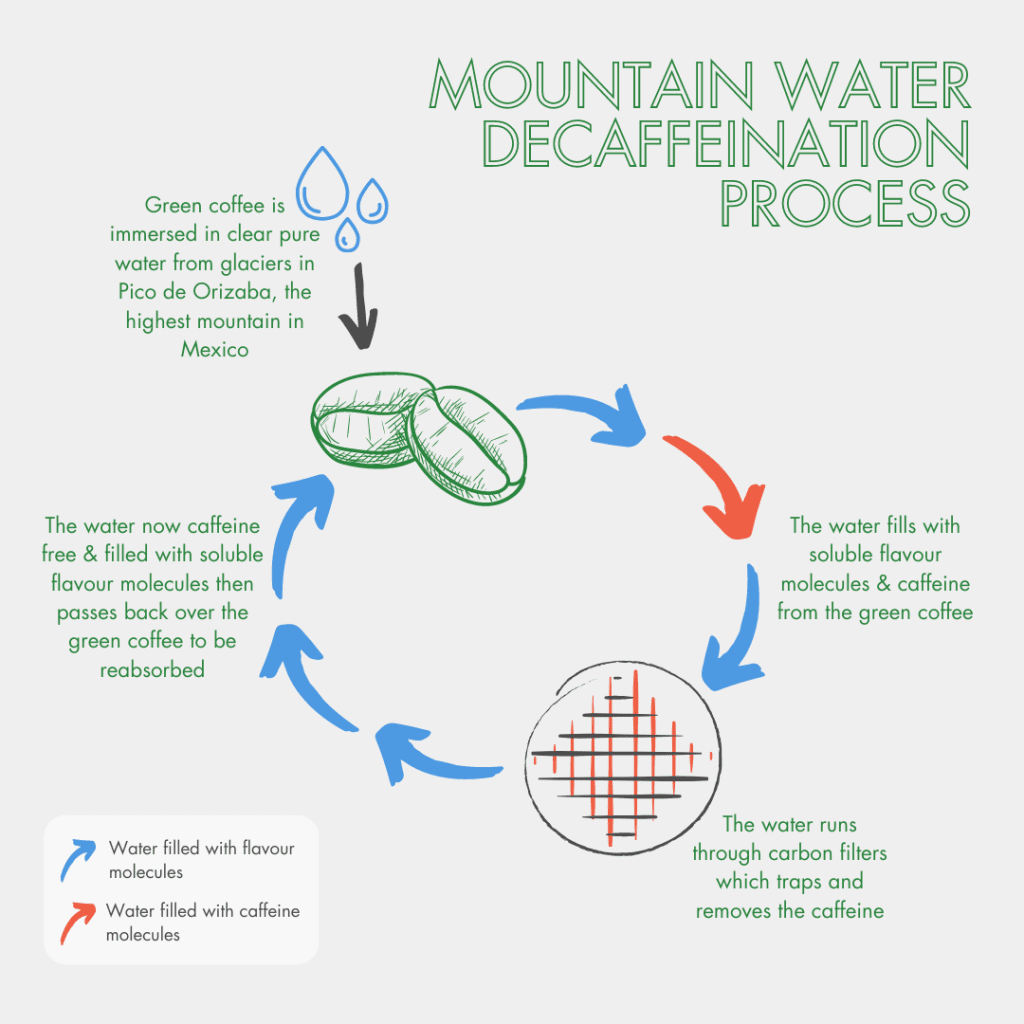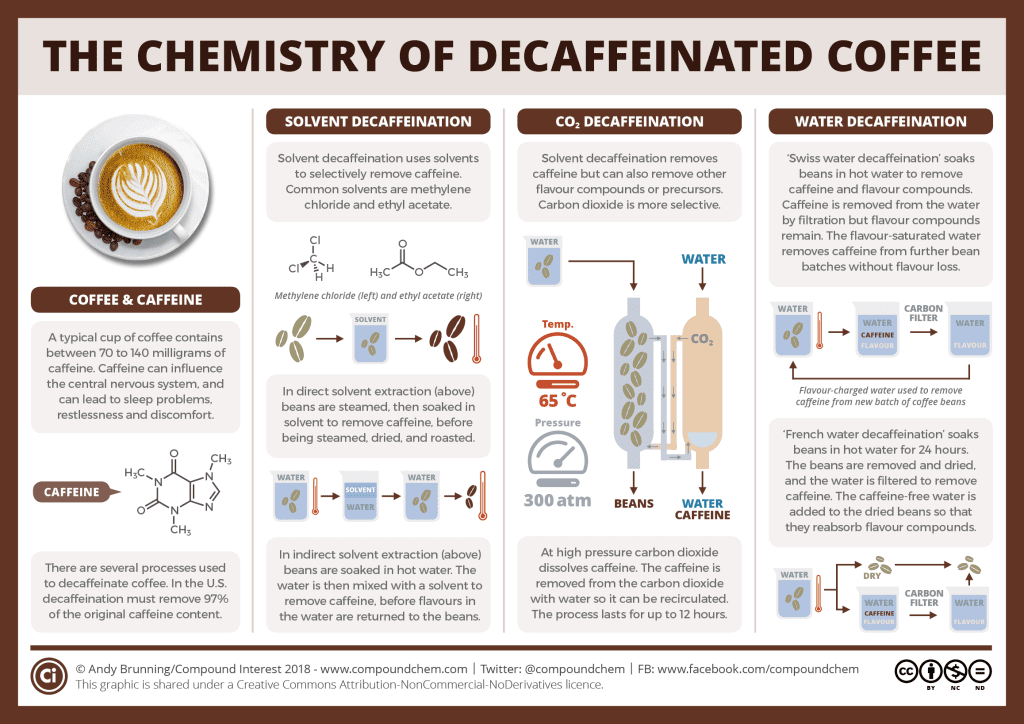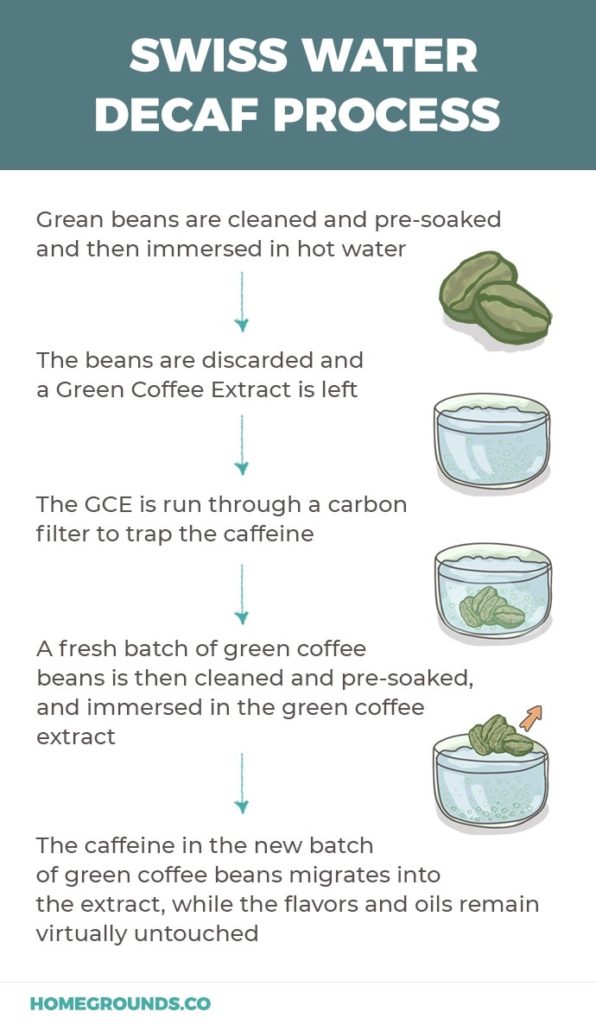So you’re curious about how decaffeination of coffee works? Well, let’s break it down for you.
Decaffeination is removing caffeine from coffee beans while retaining the delicious flavors and aromas that make your morning brew so enjoyable.
It’s a remarkable feat of science and engineering that allows coffee lovers to sip on their favorite beverage without the jitters.
In this article, we’ll explore the different methods used to decaffeinate coffee, from the traditional to the more innovative approaches. Get ready to unlock the secrets behind your beloved cup of decaf!
Overview of Decaffeination
What is decaffeination?
Decaffeination removes caffeine from coffee beans and other caffeinated products, such as tea and chocolate. It allows individuals to enjoy the flavor and aroma of these products without the stimulating effects of caffeine.
Why is decaffeination necessary?
Decaffeination is necessary for individuals who are sensitive to caffeine or prefer to limit their caffeine intake. Caffeine can have various effects on the body, including increased heart rate, jitteriness, and sleep disturbances. By removing the caffeine, decaffeinated products offer a milder alternative for those who still want to enjoy the taste and ritual of coffee or other caffeinated beverages.
Popular decaffeination methods
There are several methods used for decaffeinating coffee and other caffeinated products. These methods can be categorized into traditional and modern methods.
Traditional methods include the direct solvent method, indirect solvent method, and Swiss Water Process. Modern methods include the supercritical carbon dioxide method and the triglyceride method. Each method has its own set of pros and cons, which we will discuss in detail.
The Chemistry of Caffeine
Chemical structure of caffeine
Caffeine is a naturally occurring alkaloid compound that belongs to a class of compounds called xanthines. Its chemical formula is C8H10N4O2, and its systematic name is 1,3,7-trimethylxanthine. Caffeine is a mild stimulant that affects the central nervous system, providing a temporary boost in energy and alertness.
Effects of caffeine on the body
Caffeine is rapidly absorbed into the bloodstream and reaches peak levels within 30 to 60 minutes. It acts as an adenosine receptor antagonist, meaning it blocks the activity of adenosine, a neurotransmitter that promotes sleep and suppresses arousal.
By blocking adenosine receptors, caffeine increases wakefulness, alertness, and focus. However, it can also cause side effects such as increased heart rate, elevated blood pressure, and gastrointestinal disturbances.
Traditional Methods of Decaffeination
Direct Solvent Method
The direct solvent method is one of the most common and oldest decaffeination methods. It involves steaming and soaking the coffee beans to open their pores, followed by a direct extraction using solvents such as methylene chloride or ethyl acetate.
The solvents selectively bind to the caffeine molecules, allowing them to be removed from the beans. The beans are then steamed again to remove any remaining solvents. This method preserves the flavor compounds in the beans and is often used for large-scale decaffeination.
Indirect Solvent Method
The indirect solvent method, also known as the water-ethanol method, follows a similar process to the direct solvent method. After steaming and soaking, the beans are soaked in hot water that contains a small amount of ethanol.
The water acts as the solvent and extracts the caffeine from the beans, while the ethanol helps to enhance the caffeine solubility. The caffeine-free water is then separated from the beans, and the caffeine is removed from the water using activated carbon filters. Some favor this method as it avoids using chemical solvents.
Swiss Water Process
The Swiss Water Process is a unique method of decaffeination that does not utilize any chemical solvents. It begins with steaming and soaking the beans to open their pores. The beans are soaked in hot water, which extracts the caffeine and flavor compounds.
The resulting water, known as “flavor-charged water,” is passed through activated carbon filters that selectively remove the caffeine while retaining the flavor compounds. The decaffeinated beans are then dried and roasted. The Swiss Water Process is a natural and chemical-free method that preserves the original taste of the coffee.
Modern Methods of Decaffeination
Supercritical Carbon Dioxide Method
The supercritical carbon dioxide method is a more recent innovation in decaffeination. It involves steaming and soaking the beans, then using supercritical carbon dioxide (CO2) extraction. The CO2 is compressed to a supercritical state, which gives it properties of both a liquid and a gas.
In this state, it acts as a solvent and selectively extracts the caffeine from the beans. The caffeine-rich CO2 is then separated from the beans, and the pressure is released, causing the CO2 to return to a gaseous state and leaving the caffeine behind. This method is known for producing high-quality decaffeinated coffee with minimal flavor loss.
Triglyceride Method
The triglyceride method, also known as the organic solvent method, is another modern approach to decaffeination. It involves steaming and soaking the beans, followed by an extraction process using triglycerides, naturally occurring fatty acids. The triglycerides act as a solvent and selectively extract the caffeine from the beans.
The caffeine-rich triglycerides are then separated from the beans, and the caffeine is removed from the solvent using various methods, such as evaporation or activated carbon filters. This method is considered more environmentally friendly, as triglycerides can be recycled.
Conclusion
Summary of decaffeination methods
Decaffeination methods have evolved, offering various options for removing caffeine from coffee and other products. Traditional methods such as the direct solvent method, indirect solvent method, and Swiss Water Process have been widely used for many years.
These methods have advantages, including preserving the flavor compounds and offering a natural and chemical-free option. On the other hand, modern methods such as the supercritical carbon dioxide and triglyceride methods provide innovative and efficient ways to decaffeinate coffee, often with minimal flavor loss.
Personal preference and decaffeinated coffee
When choosing decaffeinated coffee, personal preference plays a significant role. Some individuals may prefer the milder taste and reduced caffeine content of decaffeinated coffee, while others may prefer the full-bodied flavor and stimulating effects of regular coffee.
It’s important to note that decaf coffee still contains a small amount of caffeine, typically ranging from 0 to 7 milligrams per cup. Therefore, individuals who are highly sensitive to caffeine should still exercise caution when consuming decaffeinated products.
Decaffeination allows individuals to enjoy the rich flavors of coffee without the stimulation of caffeine. Whether through traditional or modern methods, the decaffeination process ensures that individuals have a wide range of options to satisfy their taste preferences and caffeine tolerance.
So, the next time you enjoy a cup of decaf coffee, you can appreciate the intricate chemistry and careful processes that made it caffeine-free while preserving its delightful taste.










































